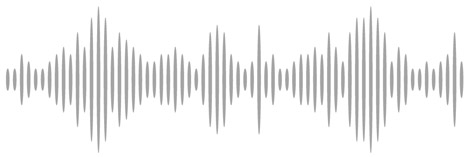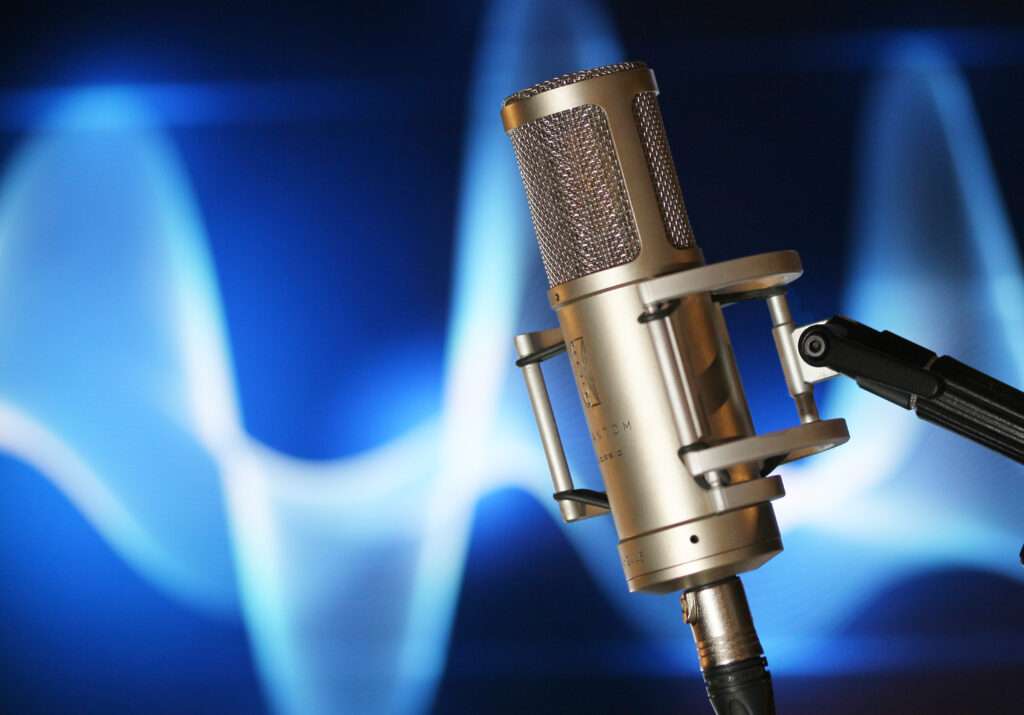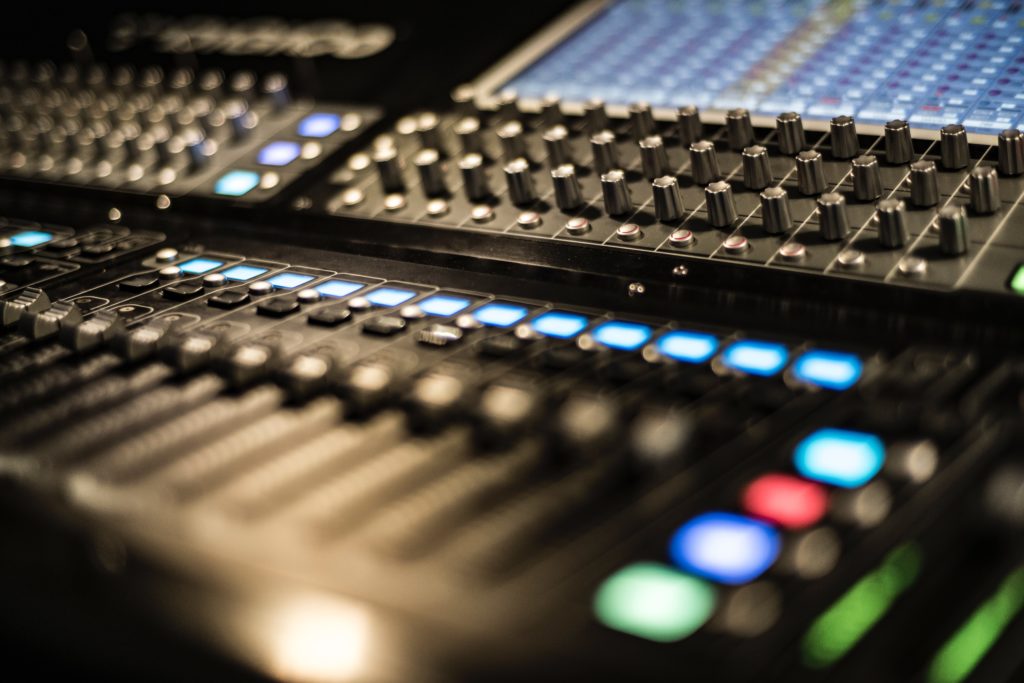Sound design is a discipline that combines several skills, at the crossroads of the foley, sound engineering and scoring. Today, sound designers have a myriad of creative tools that they can use. Here is an overview of the main ones.
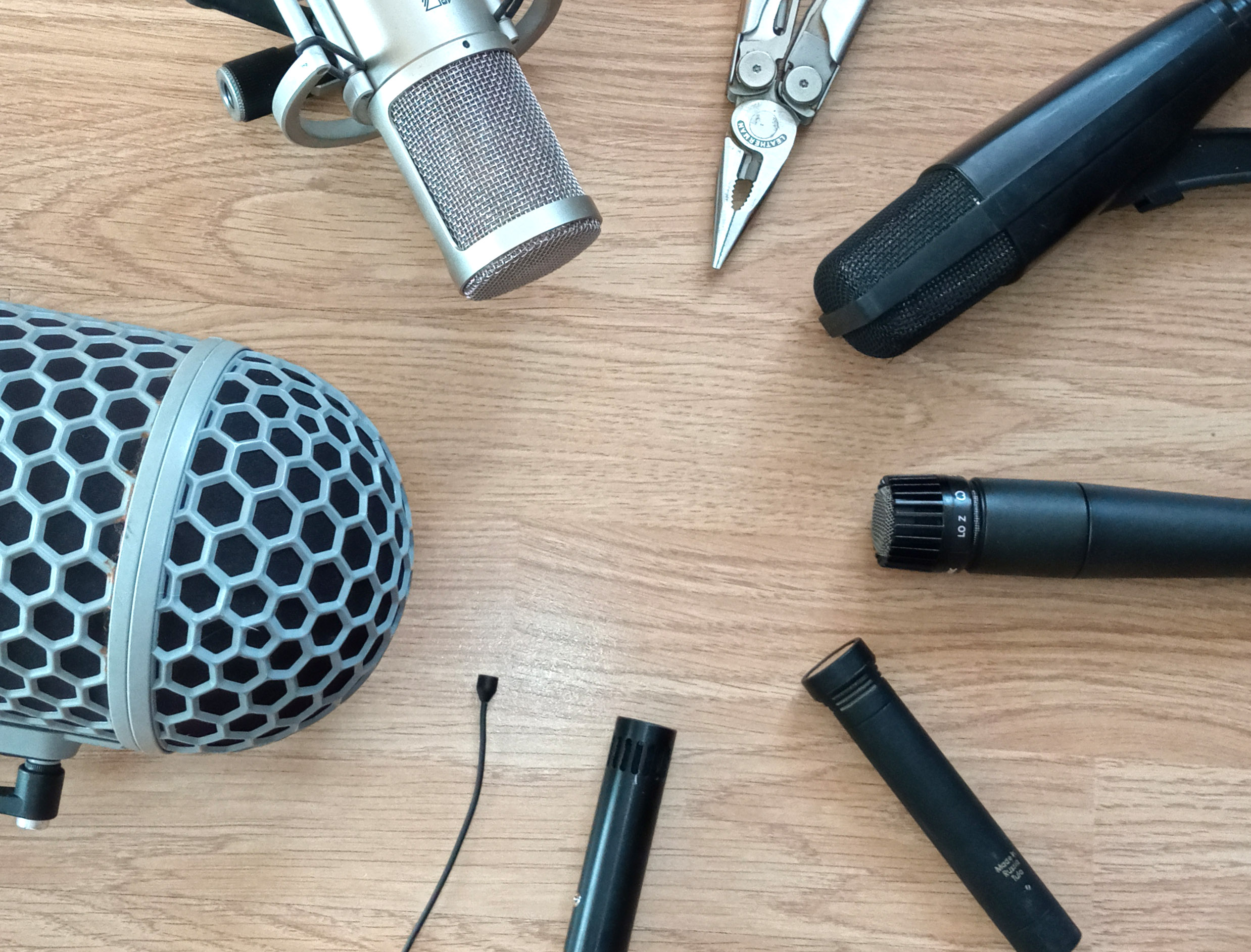
1 Microphones
The microphone (and its recorder) is the oldest and arguably the most important tool for a sound designer. It captures most of the sound material used in sound design. When I travel, I always bring a recorder to collect unexpected, strange or hardly recognizable sounds, which I might use someday as a basis to produce new sound effects. Real life sounds have the advantage of always sounding realistic, even if we match them with a different picture. For example, the electric sound of a tram can easily evoke a space shuttle. The growl of a lion can be the scream of a dinosaur. Our brain easily accepts the sounds it already knows.
Only some very specific sounds require pure sound synthesis, but with imagination and a little experience, you can achieve or imitate just about any sound with a simple microphone, the right accessories, and a few processing.
There are a lot of ways to divert a microphone from its normal use, for example in ultra-proximity, through a pipe, underwater, by blowing on it, etc. One of the most famous diverted uses of a microphone is undoubtedly Ben Burt creating the mythical sound of the lightsaber.
Transducers
There are special microphones that do not pick up vibrations of the air. They are called transducers (even though a microphone is also a transducer).
Contact microphones, piezo or accelerometers capture the vibrations through a solid way. From the same sound source, we can obtain very different sounds from those we hear naturally, though air. It’s the reason why our voice always sounds foreign to us when we hear it from a recording, we are used to hearing ourselves partly through our bones, a bit like contact mics. I use different contact microphones like the Barcus Berry 4000, the LOM Geofon or C-Ducer.
Some transducers called hydrophones pick up water vibrations. They can also be used as contact microphones. Also read the article Underwater sound design.
Electromagnetic listening devices transforms the radiation of an electromagnetic field into electricity, just as electric guitar pickups do. Thanks to equipment like the LOM Priezor, we can convert the radio waves generated by all kinds of electrical or electronic devices into fascinating sounds. Here’s an example:
2 Computer and digital audio workstations (DAW)
True revolution in the audio domain, computers concentrate a large number of tools to transform and shape the sound. Here are a few :
Layering
Layering multiple sounds is the simplest operation in sound design: a first sound effect + a second sound effect = a third sound effect.
This operation, which required a mixer and two tape recorders thirty years ago, is now straightforward thanks to digital audio stations like ProTools or Cubase. We can now layer almost infinite number of sounds in a very short time.
Each layer of a sound effect must provide information to the final sound. For example, to create the sound of an earthquake, it is a good idea to combine a low frequency sound, which simulates the vibration of the ground, with sounds that evoke the effects of the earthquake (falling objects, cracking ground, etc.). If we just layer similar low frequency sounds, the composite sound effect will be messy and not very evocative.
The relevant choice of the different layers composing a sound effect is an important skill.
Classic processing effects
The list of effects that can be applied to a sound is huge: equalizer, pitch-shifting, delay, reverb, flanger, chorus, modulators. Most of these effects existed long before digital in the form of bulky and expensive machines. Today, thanks to plug-ins, we can process a sound very easily, iterate and save presets. This saves a lot of time (and space in the studio).
There is a huge variety of processing effects available today as plugins, and every sound designer has their favorite.
Modern / complex effects
Convolution is a fairly new processing effect based on digital recordings of physical spaces called impulse reponses (IR). This principle is mainly used in new-generation reverberations effects to reproduce real acoustic spaces accurately. But convolution can also be used to simulate the sound of a speaker or any object.
There are also very complex creative plugins to chain several effects together and distort a sound or a voice.
Synthesizers are very useful for creating particular sound effects like magic, UI sounds, but also wind, rain, waves, engine risers or downers.
Procedural effects
Direct cousins of the CGI (Computer Generated Imagery), new softwares have recently appeared to process sounds in a procedural way, ie thanks to algorithms. In sound design, we now have tools for sound morphing, infinite multiplication of sounds or granular synthesis.
Interactive audio engines, designed for video games (also read Designing sound for video games), allow to combine and control sounds according to parameters and events. These tools, which look quite like DAWs, can randomize parameters such as the pitch or volume of a sound to avoid identical repetitions. You can virtually create an infinite number of different sounds with just two sound effets.
So many new creative tools to explore new horizons…
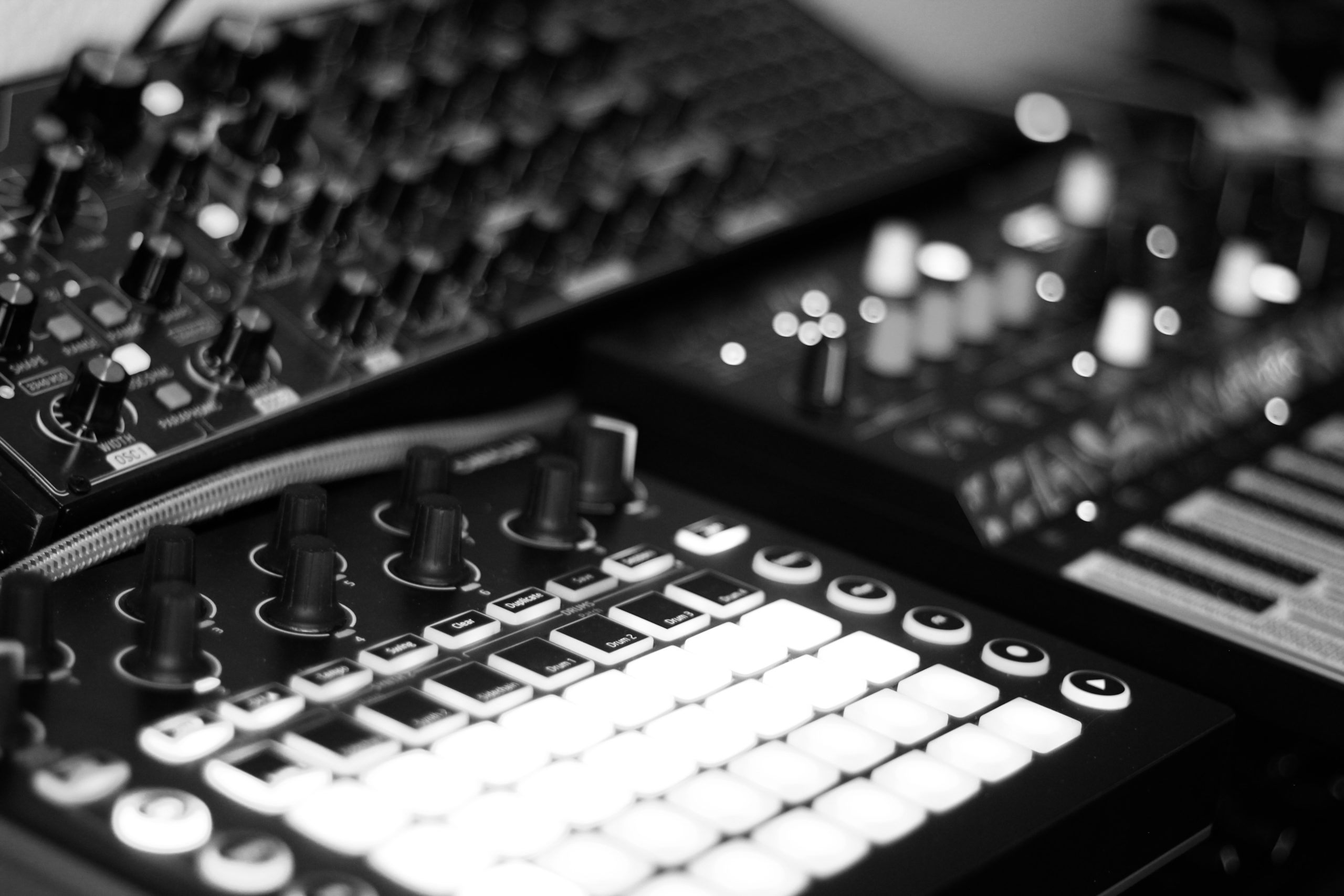
3 Sound effect libraries
Thanks to the leap in digital storage capacities and the perfect preservation of its data, sound banks (or sound libraries) are a precious asset for sound creation.
Personal sound libraies contain the fruit of years of recording, experimentation, sounds created for projects that were unused, and more.
The advantage of maintaining your own sound library is to have original sound effects within reach, the origin and history of which we know exactly. The downside of a personal soundbank is that it can never be exhaustive, as there are so many sounds around the world. This is why sound designers also buy commercial sound libraies from independent publishers or sound recordists. You can discover my sound libraries on the site Asoundeffect.
When the budget allocated to a project does not allow you to record all the sounds you want, you can buy sounds from the very large number of sound libraries available. Also read the article: Snow in summer.
Online free sound libraries such as freesound.org are powered by amateurs and professional sound recordists around the world. The sound quality and relevance of the sounds found there is sometimes poor, but the diversity of sounds can help finding inspiration or providing original sound material.
All the sound libraries are managed by a specific search software, such as SoundMiner or Soundly. It works in rewire with the DAW, to find, select, cut and process the sound effects before edition.
4 The studio
This place gathers most of the tools that are described in this article. I spend a lot of time in my studio. Like any control room dedicated to sound post-production or music, a sound designer’s studio must be acousticly treated for quality recordings and neutral listening. Comfort and ergonomics are very important because they allow long working sessions and efficiency.
In a sound design room, you can find at least monitoring speakers and a computer with a sound card. For more comfort and efficiency, you can add a control surface, secondary monitoring, a double or triple screen, various peripherals, monitoring controller, midi devices, etc.
The layout of a studio and the choice of equipment it contains is quite personal. Some sound engineers have preferences for speaker and microphone models that they are familiar with. Some like daylight while others need darker room to better focus on the sense of hearing.
I designed my studio as a versatile and bright workshop. I can record sound effects and vocals with neutral acoustics, process my sounds, compose music, interpret it, edit sound and mix in 5.1. See my material list.
Below my studio.
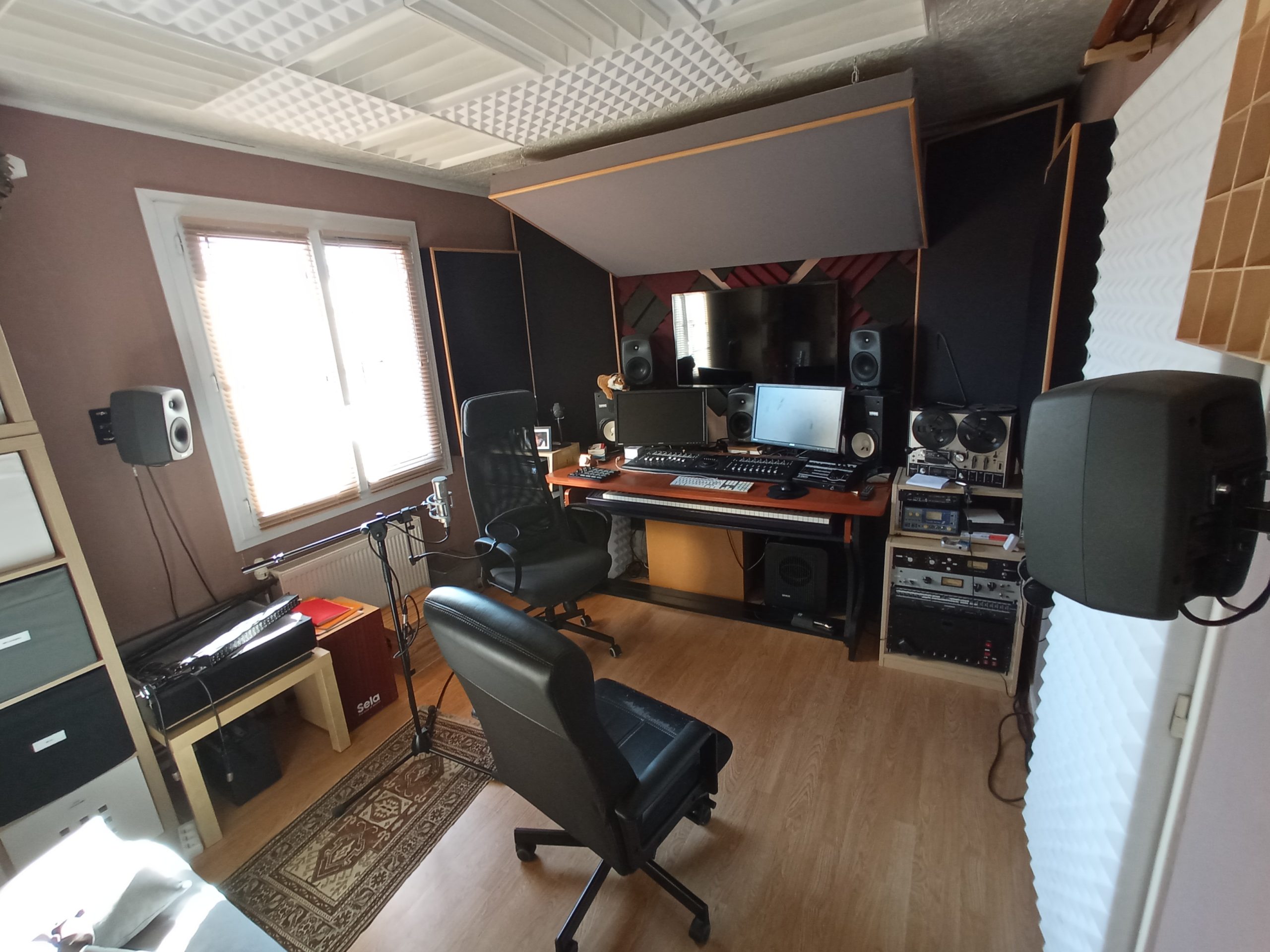
5 Props and sound toys
Sound design and foley share a wide range of tools. Just like foley artists, many sound designers collect objects or musical instruments to create their own sounds.
For my part, I collect calls, objects in wood, metal, plastic, samples of fabrics, toys, mechanisms, and many musical instruments. All these objects offer an infinite number of combinations to create new and original sound effects. Inspiration is at your fingertips: just experiment, listen, and record the relevant sound. It is like a living sound library!
Conclusion
The list of these tools is not exhaustive, and new plugins, mics and transducers appear every year. It is sometimes difficult to judge in advance how useful a new tool will be, and the temptation is often big to acquire new gadgets. But let’s not forget that the tools are only aimed to serve the main assets of a sound designer: his ear, his experience and his imagination.
Please share in the comments your favorite sound design tools.
Photos by Nicolas Titeux & Thomas Evans on Unsplash
